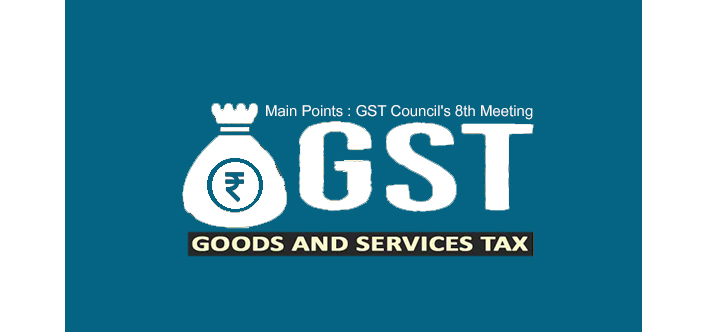Employee’s Provident Fund is a scheme which helps in providing financial assistance to the workers by saving their own money for future use after retirement. This scheme of Employee Provident Fund has been carried forward by the government for the welfare of its retired citizens and also for those who are disabled to work. The employees and their employers have to contribute a fixed amount of money from their salaries at a constant rate within a particular time interval in the Provident Fund to get interests after retirement. When the Provident Fund matures, it provides a good return and interest of the invested money as the money received will be Tax-free. The Employees Provident Fund can also be used before retirement in case of an emergency such as when a person is unfit for employment, this provides a type of monetary security to the employee. This scheme is growing at an increasing speed and is backed by many intellectual people in the business and finance industry.
APPLICABILITY AND ELIGIBLITY IN IMPLEMENTATIONOF PROVIDENT FUND
APPLICABILITY
• A company or any other Business entity having 20 or more employees working for the business must register for the Employee’s Provident Fund.
• The employers and the employees have to issue an amount of Rs.1800 per month into their Employees Provident Fund.
• When the amount has been transferred into the Employees Provident Fund, a small contribution is also made to the Pension, Insurance and Administrative Cost account.
• In case of a company which has more losses than its entire net worth can contribute 10% of their compensations in their Employees Provident Fund.
ELIGIBILITY
• An employee working under any company is qualified to participate in the scheme of Employees Provident Fund.
• Any company having 20 or more employees is eligible of participating in this scheme.
• Whenever an employee exceeds the amount of Rs.6500 in their salaries, then they have the eligibility to join the scheme with the permission of its employer.
• When a person becomes the member of this scheme, they have to contribute 12% of their rewards in the Employees Provident Fund.
BENEFITS
Insurance
In most of the organisations employee’s insurance schemes are not available to the employees of the company, Employees Provident Fund provides that scheme for the security and stability of the employee in the future. For getting insured, the business entity just need to provide a sum of Rs.6500 on a monthly basis to ensure an insurance premium benefit. Insurance helps an employee in case of an emergency, also provides a good amount of money after maturity for the survival of their family.
Pension
When an employee has retired, and does not have any source of monetary income, pension provides that source for the employee. A part of the employees pay also goes into the Employee’s Pension Fund, which provides an employee a sense of security after retirement.
Tax Free
Upon maturity of the Employees Provident Fund, the interest received by the employee’s will be tax free. This results in proper stability and security of employees as they get vast interest on their invested amount.
Financial Security
The Employees Provident Fund provides financial security for the employees at the time of retirement, emergencies and at loss of income. Employees Provident Fund provides a source of financial assistance to the retired personnel as well as gives funds to the employee to meet their requirements in case of an emergency, early drawings are allowed only in case of an emergency. When an employee cannot work, or has any disability to work, provident fund helps them to overcome their loss of income and provides means to survive. Also, if the employee has passed away then the funds are passed on to their applicant to provide them with financial assistance.
Long Term
The Employees Provident Fund allows the employees to have some kind of monetary security in the long run, it also ensures that the employee can have certain investment or any other goal after retirement. Resources can also be borrowed in the Long Run for marriage, education, medical reasons and also for housing purposes.
Withdrawal
Employees Provident Fund also provides the benefit of withdrawal to the employee. An employee can withdraw their money only when they are unemployed, self-employed or have left the current job to work in another company. In case of any emergency, an employee can withdraw the amount in its provident fund before the time of maturity. Pre-mature withdrawal can also be treated as a loan as an employee can use the money for education, marriage, medical expenses. These withdrawals must not be more than 50% of the amount in the provident fund.
Transfer
An employee can also transfer its provident fund account rather than closing it whenever they are leaving their current job and joining a new employer. Transferring of the funds from an old account to a new one is a better option because if an account is closed before 5 years then the money contributed in that account will then become tax deductible whereas by transferring of funds, an employee will get the money in full at maturity.
REGISTRATION PROCEDURE FOR EMPLOYEES PROVIDENT FUND
The Employees Provident Fund registration is now mainly done Online as it is more convenient and accessible for an organisation. A business entity having less than 20 employees can apply for the scheme voluntarily, but an organisation having more than 20 have to register their company for this scheme to avoid penalties in delaying the registration. The procedure for registering for the Employees Provident Fund is as follows:
• The company must provide the name, address, branch details, head office details and the Date on which the company was established.
• The organisation must also provide the total strength of employees working as well as the services provided by the company.
• They must also provide the legal proof that if the company is a partnership, private limited company or a public limited.
• The total salary distribution to the employees of the company must be provided with the details of the bank in which the company has its account.
• The Directors or the owners of the company have to provide legal documents to prove that the documents are verified. The address of all the owners must be given with the details of all the employees including date of joining, salary.
• A copy of the partnership deed must be given to prove that the company is registered with the Registrar of Companies.
• PAN details of the Business entity must also be provided.
For more information on EMPLOYEES PROVIDENT FUND, feel free to reach us on, info@gapeseedconsulting.com or call +91-9599444639/+91-9599444630
Here are some hand-picked blogs you should read next:



